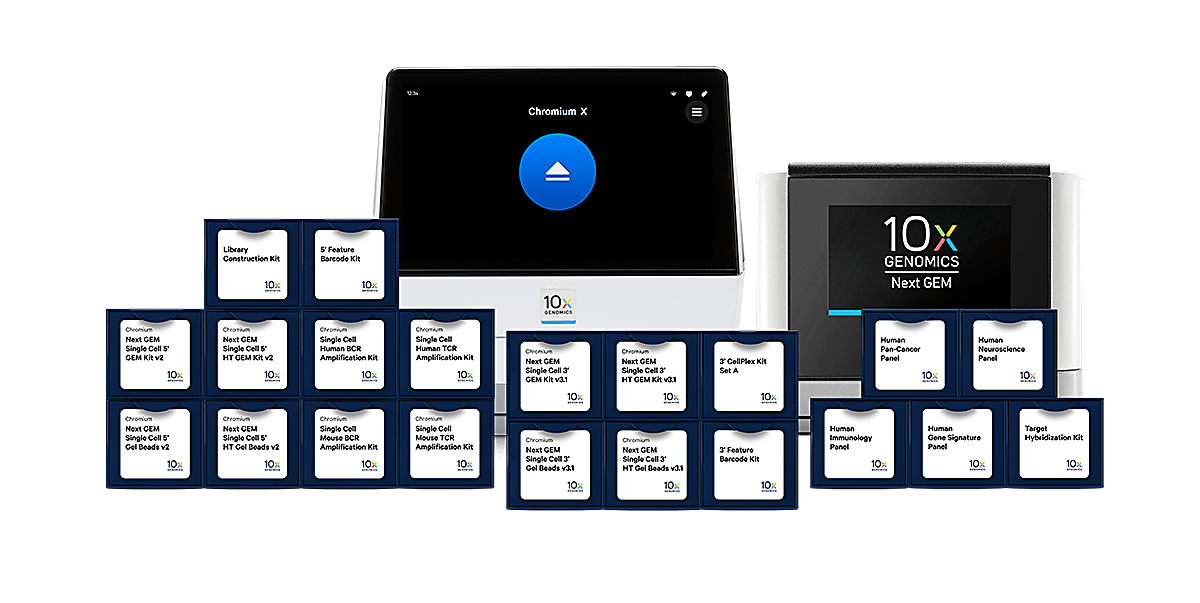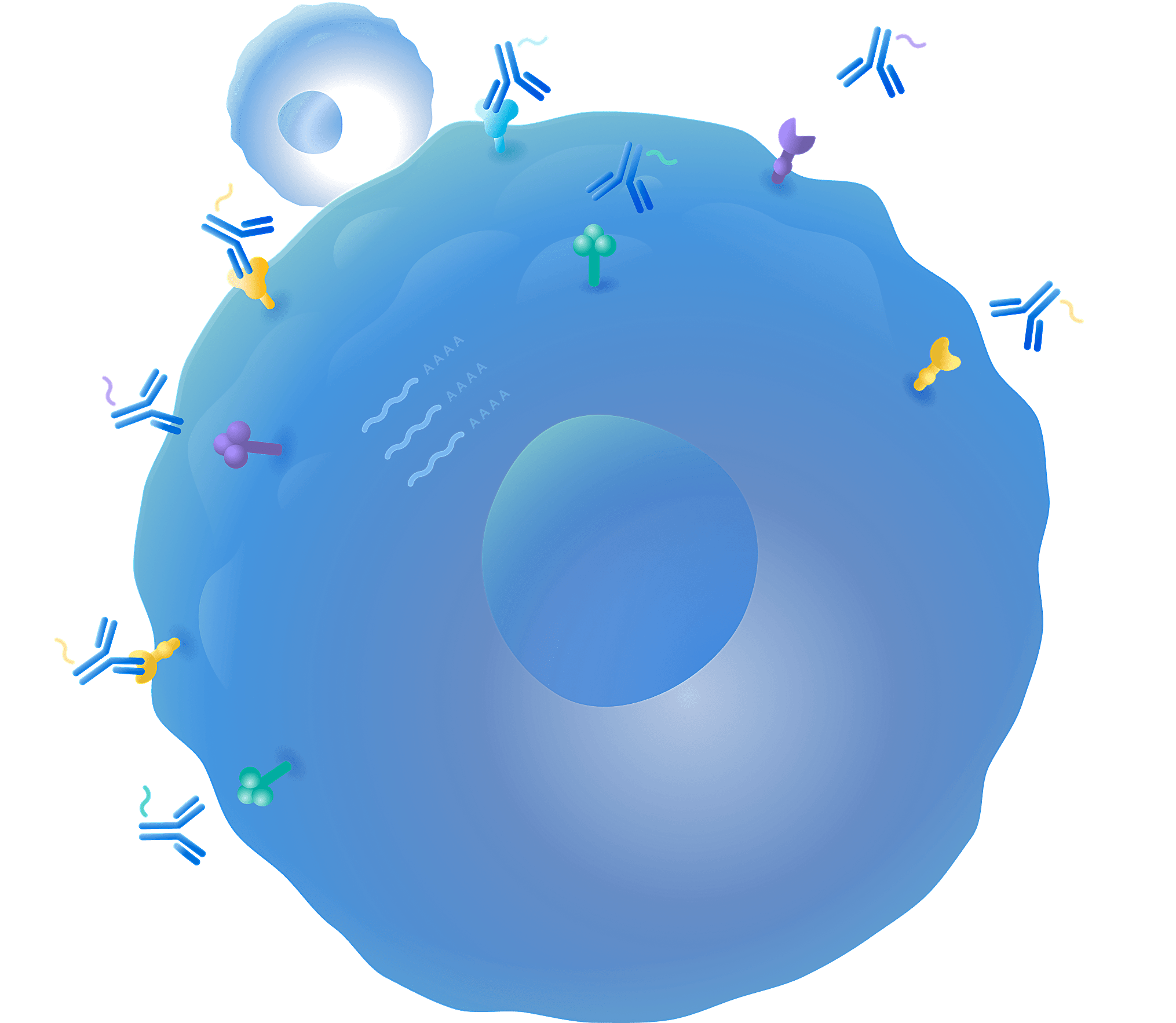Ultra-high parameter
Broaden your proteomic discovery by measuring the abundance of hundreds of cell surface epitopes.
Multiomics, cell by cell
Simultaneously profile mRNA and cell surface proteins, along with TCR/Ig sequences, and antigen specificity.
Seamless workflow
Similar staining procedure to flow cytometry, without spectral overlap or parameter limits.
Fast turnaround time
Cell staining to sequencing-ready library in as little as one day.
Streamlined data analysis
Explore and visualize multiple data types with easy-to-use software.
Diverse sample compatibility
Demonstrated on PBMCs, fresh and frozen cell lines, and dissociated tissue.
Explore what you can do
Phenotype complex cell subtypes
Identify novel cell types and functions
Discover new biomarkers
Screen antigen-specific T cells
Proven results
Videos
Publications
A pan-cancer blueprint of the heterogeneous tumor microenvironment revealed by single-cell profiling
A pan-cancer blueprint of the heterogeneous tumor microenvironment revealed by single-cell profiling
Cell Research. Junbin Qian et al., 2020.
Cell Research. Junbin Qian et al., 2020.
Broad immune activation underlies shared set point signatures for vaccine responsiveness in healthy individuals and disease activity in patients with lupus
Broad immune activation underlies shared set point signatures for vaccine responsiveness in healthy individuals and disease activity in patients with lupus
Nature Medicine. Yuri Kotliarov et al., 2020.
Nature Medicine. Yuri Kotliarov et al., 2020.
Single-cell multiomic analysis identifies regulatory programs in mixed-phenotype acute leukemia
Single-cell multiomic analysis identifies regulatory programs in mixed-phenotype acute leukemia
Nature Biotechnology. Jeffrey M Granja et al., 2019
Nature Biotechnology. Jeffrey M Granja et al., 2019
Resources
Improving Single Cell Characterization with Simultaneous Gene Expression and Cell Surface Protein Measurements at Scale
Improving Single Cell Characterization with Simultaneous Gene Expression and Cell Surface Protein Measurements at Scale
Application Note, 10x Genomics
Application Note, 10x Genomics
Characterization of the Tumor Microenvironment
Characterization of the Tumor Microenvironment
Application Note, 10x Genomics
Application Note, 10x Genomics
Our end-to-end solution
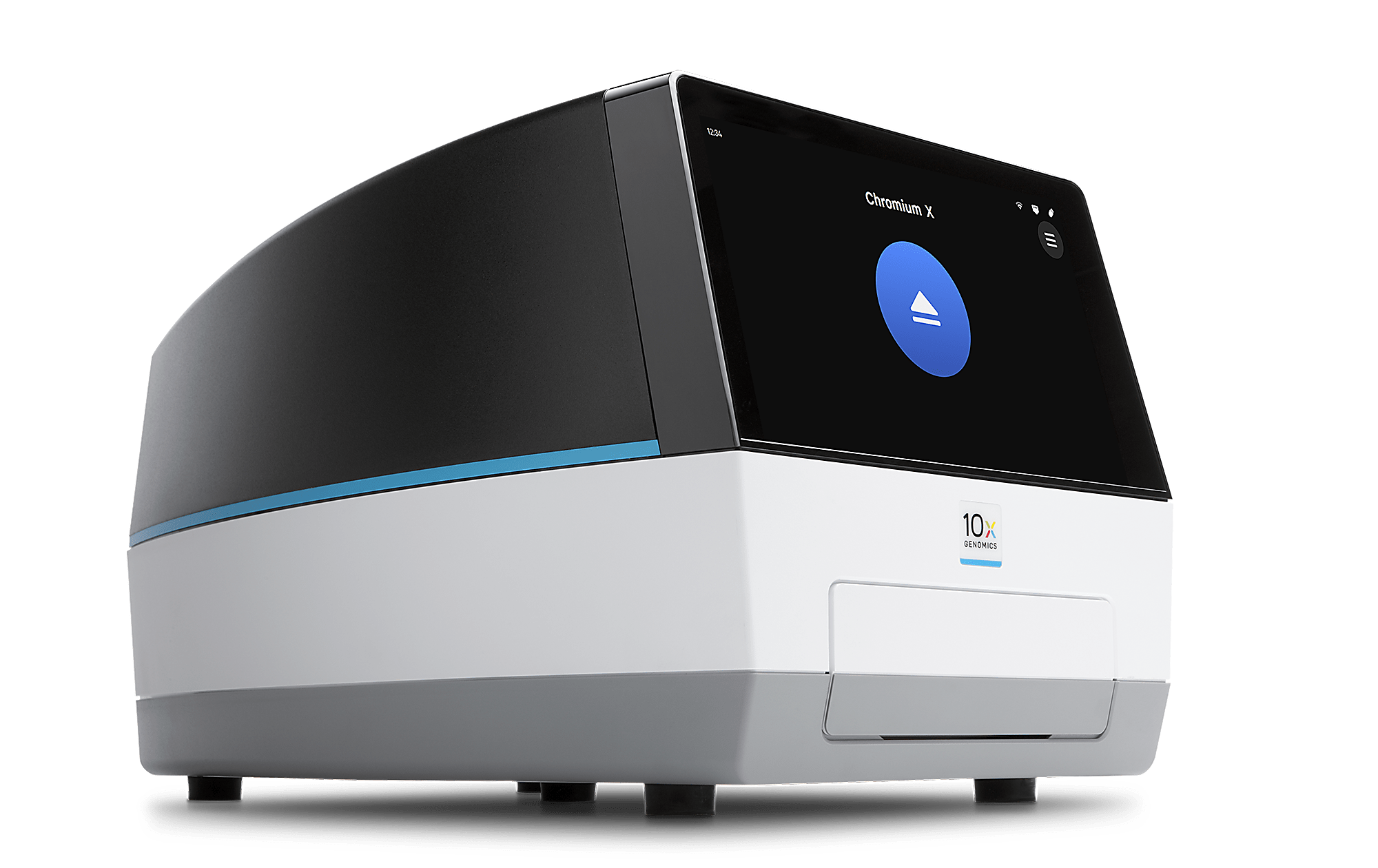
Chromium instrument with Next GEM technology
Our scalable instrument
Our compact instrument
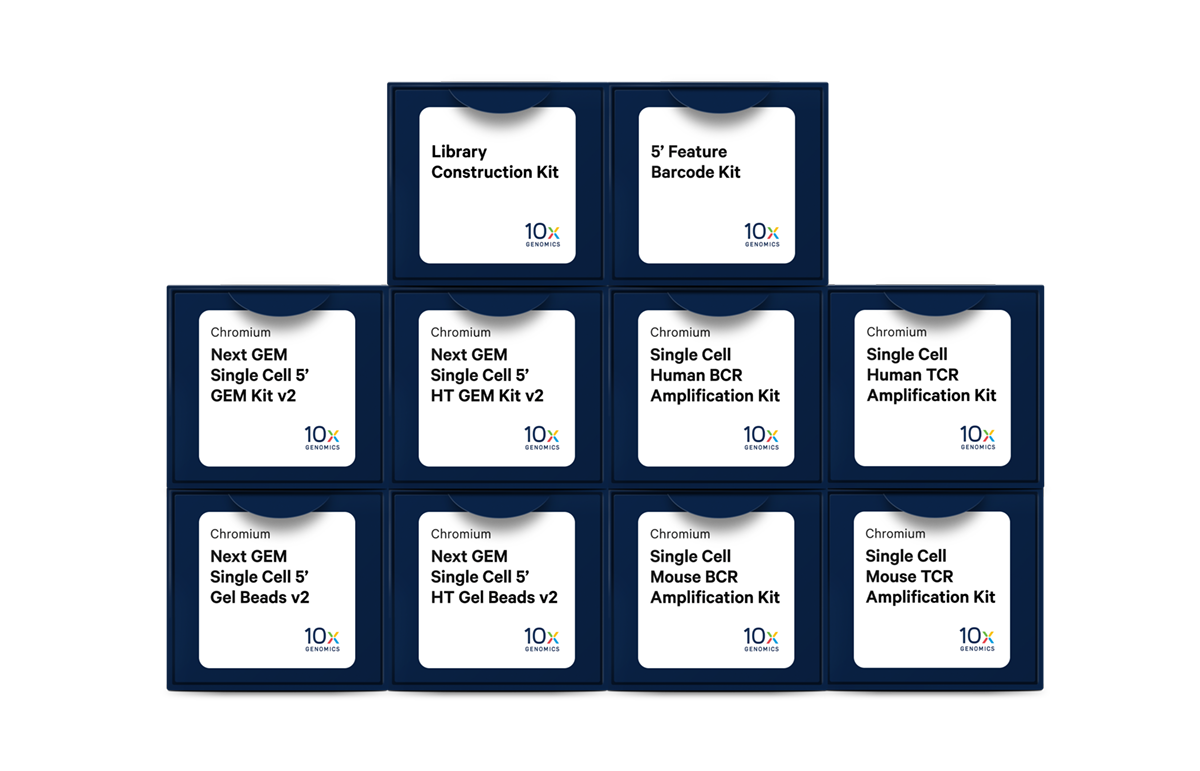
Chromium Single Cell reagents
With our reagent kits, obtain a comprehensive multidimensional view of a single cell, including mRNA, cell surface proteins, full-length paired BCR and TCR sequences, and antigen-receptor specificity.
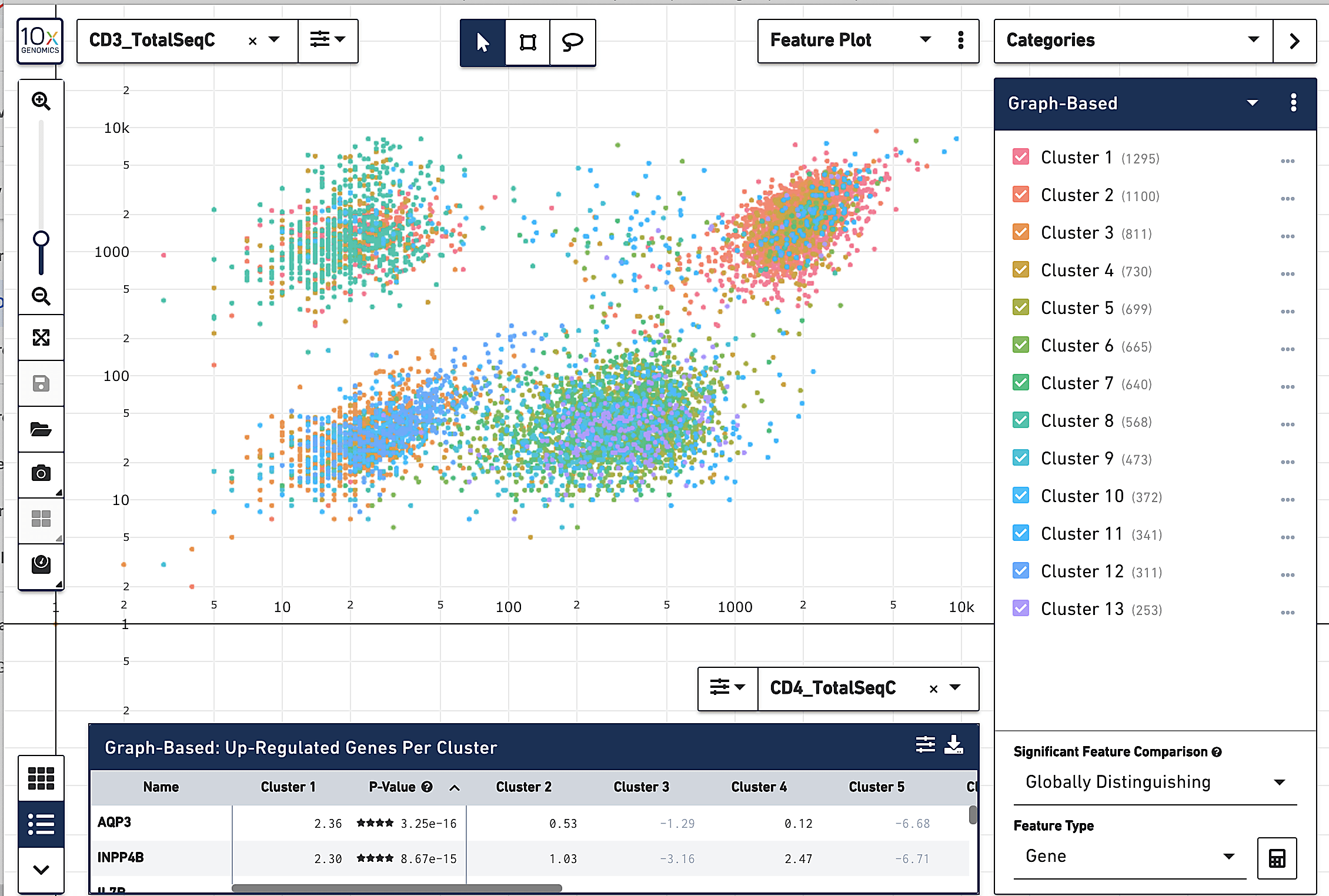
Analysis and visualization software
Our data processing platform
Our set of analysis pipelines
Our visualization software

World-class technical and customer support
Our expert support team can be contacted by phone or email.
Components required
Single Cell Immune Profiling
- Chromium Next GEM Single Cell 5′ Library and Gel Bead Kit v2 (1000265, 4 rxns | 1000263, 16 rxns)
- Chromium Next GEM Single Cell 5’ HT Kit v2 (1000374, 8 rxns | 1000356, 48 rxns)
- Chromium 5′ Feature Barcode Kit (1000256, 16 rxns)
- Chromium Next GEM Chip K Single Cell Kit (1000287, 16 rxns | 1000286, 48 rxns)
- Dual Index Kit TN Set A (1000250, 96 rxns – Protein Libraries)
- Dual Index Kit TT Set A (1000215, 96 rxns – Gene Expression Libraries)
- Targeted Gene Expression
- 10x Compatible BioLegend Total-Seq™–C antibodies
- 10x Compatible BioLegend TotalSeq™–C Human Universal Cocktail, V1.0
- 10x Compatible Abcam 5’ Feature Barcode Antibody Conjugation Kit - Lightning-Link®
Single Cell Gene Expression
- Chromium Next GEM Single Cell 3' Kit v3.1 (1000269, 4 rxns | 1000268, 16 rxns)
- Chromium Next GEM Single Cell 3’ HT Kit v3.1 (1000370, 8 rxns | 1000348, 48 rxns)
- Chromium 3’ Feature Barcode Kit (1000276, 16 rxns)
- Chromium Next GEM Chip G Single Cell Kit (1000127, 16rxns | 1000120, 48 rxns)
- Dual Index Kit NT Set A (1000242, 96 rxns – Protein Libraries)
- Dual Index Kit TT Set A (1000215, 96 rxns – Gene Expression Libraries)
- Targeted Gene Expression
- 10x Compatible BioLegend TotalSeq™–B antibodies
Workflow
- 1
Prepare your sample
Label your cells with TotalSeq™–B/C antibodies conjugated with a unique oligonucleotide barcode. You can also enrich your populations of interest by staining with antibodies for flow cytometry at the same time. Once the cells are washed, you can proceed to 10x library construction.
Resources - 2
Construct your 10x library
Construct 10x barcoded libraries using our reagent kits and a compatible Chromium instrument. Each member of the Chromium instrument family encapsulates each cell with a 10x barcoded Gel Bead in a single partition. Within each nanoliter-scale partition, cellular transcripts undergo reverse transcription to generate cDNA for both mRNA and cell surface proteins, each of which shares a 10x Barcode with all cDNA from its cell of origin.
Resources - 3
Sequence
The resulting 10x barcoded libraries are compatible with standard NGS short-read sequencing on Illumina sequencers for profiling of thousands of individual cells.
Resources - 4
Analyze your data
Convert raw sequencing data to biologically meaningful insights with Cell Ranger. Cell Ranger processes data from both gene expression and cell surface protein libraries.
Analysis pipelines output
Output includes QC information and files that can be easily used for further analysis in our Loupe Browser visualization software, or third-party tools.
Resources - 5
Visualize your data
Use our Loupe Browser to define and compare cell types based on gene expression and cell surface proteins.
Do I need to be a bioinformatician to use it?
Loupe is a point-and-click software that’s easy for anyone to download and use.
Resources
Frequently asked questions
In flow cytometry, the number of proteins that can be measured is limited due to inherent spectral overlap, but Feature Barcode technology lets you measure hundreds of parameters without the need for fluorescence compensation. We have compared the distribution of the fluorescence intensity and the UMI counts obtained from flow cytometry and Feature Barcode signals, respectively. Our results have shown that the cell distribution profiles generated by the two technologies are remarkably concordant. Using Multiomic Cytometry, for each cell you can also overlay gene expression, TCR/Ig sequences for T/B cells, and antigen specificity information, allowing accurate characterization of cellular identity, states, and functions.
It is possible to perform custom conjugation of oligos to antibodies of interest for use with the 10x Genomics workflows. You can use BioLegend's custom conjugation services or Abcam’s custom conjugation kits to obtain or create custom oligo-conjugated antibodies.
If you are interested in enriching a certain population of interest or a rare cell type, you can sort your cells before 10x Genomics library preparation. Cells can be stained with oligo-conjugated antibodies along with flow antibodies prior to sorting.
Cell surface protein analysis can be performed without gene expression or immune profiling analysis. Once the cells are stained, they are partitioned into GEMs where cDNA molecules are barcoded. The resulting cDNA are used to generate cell surface protein libraries.
10x Genomics provides analysis and visualization software that includes Cell Ranger, Loupe Browser, and Loupe V(D)J Browser. Cell Ranger is a set of analysis pipelines that automatically generate expression profiles based on genes and/or protein for each cell and identify clusters of cells. The results can then be visualized and interpreted using our interactive visualization software, Loupe Browser and Loupe V(D)J Browser.
